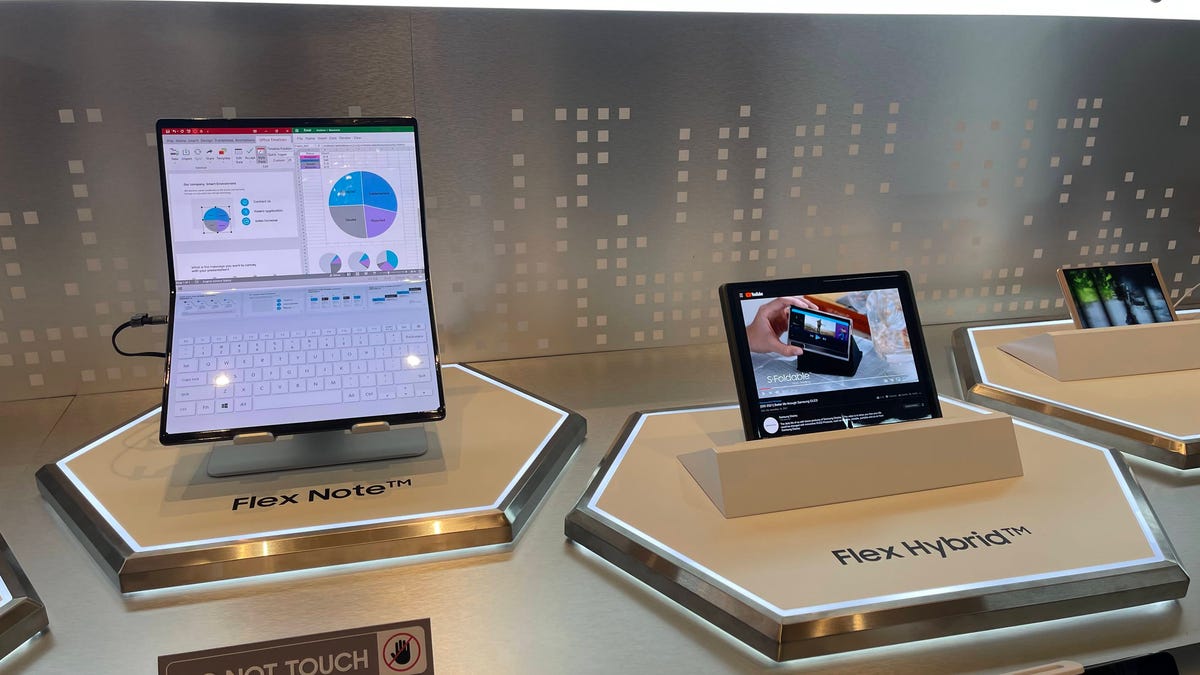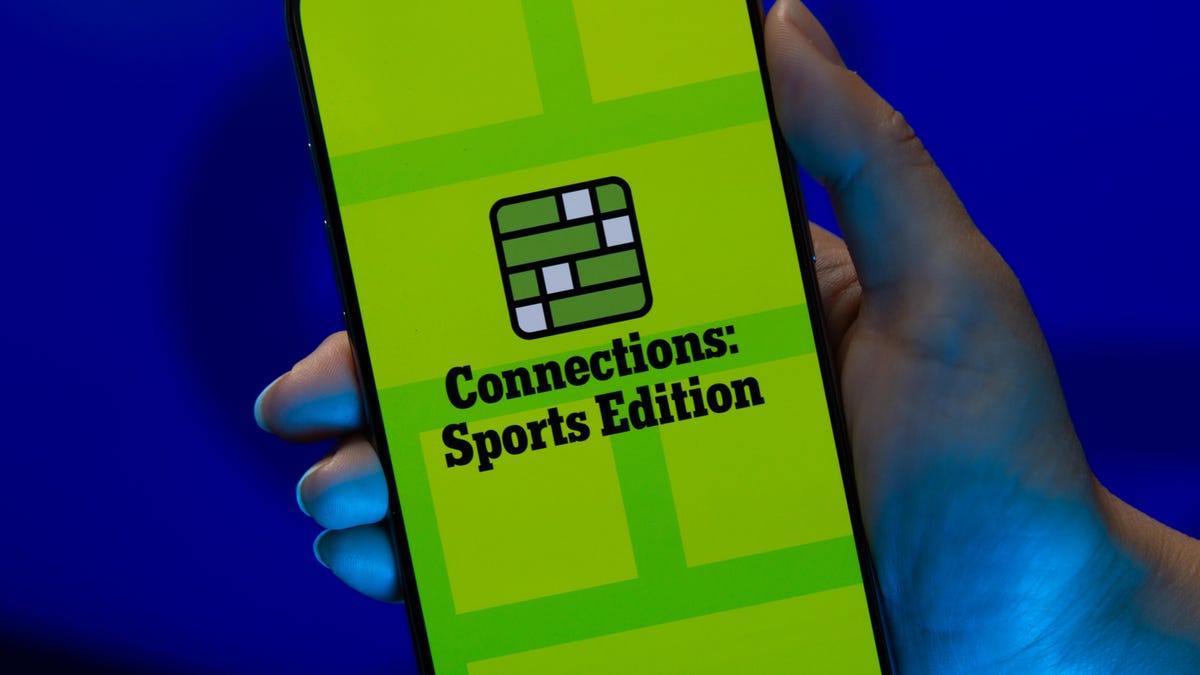Technologies
Foldable Tablets Are More Than Just a Gimmick Thanks to Samsung and LG
Commentary: At CES 2023, we saw promising concept tablets that bend and slide without breaking.

Foldable phones are all the rage, with Samsung, Oppo and Motorola, releasing their own devices. Other companies, like Apple and Google, are rumored to be working on versions of their flagship products with foldable designs.
But at CES 2023, foldable tablets are what piqued my curiosity. Samsung and LG, two of the world’s largest display-makers, both showcased tablet-like devices in various shapes and sizes that can bend, fold, slide or do all three.
These concepts got me wondering about whether there’s a real future for foldable tablets, especially at a time when companies are struggling to sell traditional tablets. What is clear, however, is that companies like Samsung and LG are thinking about it, as are PC-makers like Lenovo and Acer.
The more I’ve thought about it, the more a foldable tablet starts to make sense — maybe even more so than a foldable phone.
Samsung and LG’s foldable concepts at CES 2023
Samsung and LG both kicked off CES 2023 with announcements about their concept foldable displays, many of which come in tablet-sized formats. The star of the show was Samsung’s Flex Hybrid, a concept that you have to see to fully understand.
It closes like a notebook and opens up to reveal a tablet-like screen. But the real wow factor is that you can extend the screen’s size and even change its aspect ratio when unfolded. The right side of the screen slides out, extending the display size from 10.5 inches to 12.4 inches. In a demonstration at its CES booth, Samsung showed how the display automatically adjusts to show more content when the screen is extended.
This isn’t the first time Samsung has exhibited concepts like this. In 2022, Samsung flaunted accordion-like displays and sliding screens, designs that are also present this year.
Samsung has other ideas for shapeshifting tablets, too. It also showed the Flex Slidable Duet concept at CES, a screen that expands on both sides to provide more viewing area for playing games or watching movies. The display measures 13 to 14 inches but can extend up to 17.3 inches, according to a Samsung press release. There’s also a version of this concept that can only expand its screen in one direction, a device that Samsung appropriately calls the Flex Slidable Solo.
LG had two main foldable tablet concepts to show at CES: an 8-inch tablet that can fold inward and outward in both directions, and a 17-inch device that folds in half. LG asserts that the 17-inch display is almost entirely creaseless, and the company is positioning it as either a giant tablet or a more portable external monitor for a laptop.
The gadgets shown at CES are far from being the first foldable tablets. There are Lenovo’s X1 Fold and newer ThinkPad X1 Fold, while Asus has the Zenbook Fold OLED. LG’s 17-inch concept largely looks like it’s trying to accomplish the same goal that Lenovo and Asus have already begun to explore with these devices.
The big question is whether these companies can convince consumers that foldable tablets are even useful in the first place. Samsung is seemingly trying to address this conundrum by developing screens that can change their shape and size to go along with how you’re using your device. Based on Samsung’s demo of the Flex Hybrid, it looks like you’ll be able to view content that wasn’t visible before when expanding the slideable portion of the screen. The clip above seems to show a shopping website as an example, with more products being shown as the screen expands.
Lenovo already has some interesting ideas about how to put the X1 Fold’s bendable screen to good use. When the screen is folded halfway, you can place Lenovo’s Bluetooth keyboard over the bottom half of the screen so that it functions as a mini laptop.
Samsung also isn’t the only company experimenting with displays that can expand by sliding and rolling. TCL and Motorola have both dreamed up similar concepts for smartphone designs, although Samsung’s feels closer to an actual product given its experience in foldables. Samsung is also the world’s largest smartphone-maker and second-largest tablet-maker, which makes its concepts seem more impactful than those from TCL and Motorola. While LG no longer has a presence in the mobile industry, it’s a major display supplier and still makes its own laptops.
Foldable tablets may have advantages over foldable phones
Having a phone that can fold in half to easily fit in your pocket can certainly be useful. But a tablet that can do the same thing is even better, mostly for the simple reason that tablets are inherently larger than most phones.
There’s another advantage: Foldable tablets may not face all of the same design challenges that bendable phones have encountered so far. For example, one of my biggest complaints about the Galaxy Z Fold lineup has been that it sometimes feels awkward to use when closed. The cover screen has vastly improved since the first Galaxy Fold arrived in 2019, but it still doesn’t come close to feeling like a standard, nonfolding phone.
The Galaxy Z Fold also feels bulky when closed since its thickness essentially equates to two phones stacked on top of one another. When I reviewed Microsoft’s Surface Duo 2 in 2021, I struggled to find a comfortable way to hold it when taking photos with the main camera since you must keep the phone unfolded to see what you’re shooting.
These drawbacks may not be as big of an issue with foldable tablets. Unlike phones, you’re probably not going to be using a tablet in one hand most of the time. An outer display on a foldable tablet, if there even is one, wouldn’t matter as much because you’re presumably going to be using the device unfolded. The foldable tablets I’ve seen so far don’t even have cover screens.
Aside from the selfie camera for video chats, camera quality also isn’t as important on a tablet as it is on a phone. So the awkwardness issue I mentioned when taking photos with the Surface Duo 2 likely wouldn’t happen on a foldable tablet.
The primary appeal behind foldable tablets from Samsung, LG, Lenovo and Acer — concept or not — is portability. Having a tablet that folds in half makes it easier to fit in a backpack, suitcase or purse on your next flight, commute or beach trip. But phones are already compact in their current form, meaning the value proposition behind phones like the Galaxy Z Fold can be a little harder to sell.
That doesn’t mean foldable tablets are immune from design hiccups, as my colleague Dan Ackerman wrote when trying out Lenovo’s and Acer’s devices. Creating larger displays that bend and fold likely presents its own set of engineering challenges compared to foldable phones.
Foldable phones are also moving more quickly, with market researcher IDC forecasting a 66.6% year-over-year increase in global shipments in 2022. So even though foldable phones may have different hurdles to overcome, companies like Samsung have been able to address these points over several generations of products so far.
Tablets need a refresh
Tablet sales got a boost during the early phase of the pandemic as people socialized, worked and attended school virtually. But sales looked bleak last year. Global tablet shipments were down 8.8% year over year in the third quarter of 2022, marking the fifth straight quarter of decline, according to IDC. That slump was mostly due to economic headwinds as consumers are looking to spend less, says the report.
New tablets with shapeshifting displays may not be enough to change that, especially since foldable devices are typically expensive. But tablets are still long overdue for a refresh. Arguably, the tablet’s biggest transformation since the first iPad’s launch has been the shift toward laptop-tablet hybrid devices, a transition that began roughly a decade ago around the debut of Windows 8. But tablets haven’t fundamentally changed much since then, aside from adapting larger screens and gaining routine hardware upgrades.
It took years for those hybrid devices to work out their kinks and become mainstays in our lives. If foldable tablets catch on, the case will likely be the same, mostly because of high prices and software challenges. But the concepts present at CES show that progress is certainly happening.
The goal for all tablets, foldable or not, is to provide a larger display for tasks that your phone may not be ideal for such as gaming, watching movies, reading and working. So finding creative ways to further extend that screen size, as Samsung has done with the Flex Hybrid’s slidable screen, seems like a natural evolution.
Foldable phones still feel like they’re in search of a purpose, but foldable tablets may have already found one.
Technologies
Your Bluetooth Audio Devices Could Be at Risk of Hijacking, Researchers Say
Google says it has addressed security vulnerabilities that could affect Bluetooth products, but researchers contend that issues persist.

Researchers working at KU Leuven University in Belgium are warning people who use Bluetooth audio products that their devices may be at risk due to vulnerabilities in Google’s Fast Pair technology, a feature that makes it quicker and easier to connect Bluetooth devices.
Google says it has addressed issues that could allow hackers to hijack audio devices and track their location. But the researchers say the vulnerabilities, which it collectively refers to as WhisperPair, still affect products from device makers including Sony, Harman and Google itself. In their tests, the researchers found these products could be hacked from as far as about 46 feet away.
A Google representative told CNET that it has updated the software for some of its own audio products, including its Pixel Buds Pro, and that some of the vulnerabilities stemmed from other companies not properly following Fast Pair specifications. Google said it had informed companies about this in September.
Don’t miss any of our unbiased tech content and lab-based reviews. Add CNET as a preferred Google source.
«We appreciate collaborating with security researchers through our Vulnerability Rewards Program, which helps keep our users safe. We worked with these researchers to fix these vulnerabilities, and we have not seen evidence of any exploitation outside of this report’s lab setting,» Google said in a statement provided to CNET. «As a best security practice, we recommend users check their headphones for the latest firmware updates. We are constantly evaluating and enhancing Fast Pair and Find Hub security.»
In response to specific concerns about device tracking, Google added, «We rolled out a fix on our end to prevent Find Hub network provisioning in this scenario, which completely addresses the potential location tracking issue across all devices.»
Google has issued two security updates this month, one for Wear OS and one for Google Pixel devices. Each contains information about the company’s security patches.
The WhisperPair research group said it’s working on an academic paper detailing its findings. On its website, the researcher group said, «Our findings show how a small usability ‘add-on’ can introduce large-scale security and privacy risks for hundreds of millions of users.»
The research group released a YouTube video discussing problems with Fast Pair, a Google technology introduced in 2017 that connects Bluetooth devices with one tap across Android and Chrome OS.
The group said that it worked with Google after reporting its findings and was awarded a $15,000 bounty. The researchers said they agreed to a 150-day disclosure window in which Google would release security patches. However, the website points out that users of Bluetooth devices like earbuds may not be aware of security updates that could protect them.
The website includes a page where users can look up which audio products are vulnerable, with details on how to get them updated. Google doesn’t have detailed information about these vulnerabilities on its Fast Pair Known Issues page.
Technologies
Today’s NYT Connections Hints, Answers and Help for Jan. 16, #950
Here are some hints and the answers for the NYT Connections puzzle for Jan. 16 #950.

Looking for the most recent Connections answers? Click here for today’s Connections hints, as well as our daily answers and hints for The New York Times Mini Crossword, Wordle, Connections: Sports Edition and Strands puzzles.
Today’s NYT Connections puzzle has a very intriguing blue group. You’ll notice some band names, but can you locate what they have in common? Read on for clues and today’s Connections answers.
The Times has a Connections Bot, like the one for Wordle. Go there after you play to receive a numeric score and to have the program analyze your answers. Players who are registered with the Times Games section can now nerd out by following their progress, including the number of puzzles completed, win rate, number of times they nabbed a perfect score and their win streak.
Read more: Hints, Tips and Strategies to Help You Win at NYT Connections Every Time
Hints for today’s Connections groups
Here are four hints for the groupings in today’s Connections puzzle, ranked from the easiest yellow group to the tough (and sometimes bizarre) purple group.
Yellow group hint: Worn on heads.
Green group hint: Nighty-night.
Blue group hint: Bands with something alphabet-related in common.
Purple group hint: Like great.
Answers for today’s Connections groups
Yellow group: Kinds of hats.
Green group: Components of a kid’s bedtime routine.
Blue group: Musical acts with «A» as the only vowel.
Purple group: Grand ____.
Read more: Wordle Cheat Sheet: Here Are the Most Popular Letters Used in English Words
What are today’s Connections answers?
The yellow words in today’s Connections
The theme is kinds of hats. The four answers are derby, fedora, Panama and porkpie.
The green words in today’s Connections
The theme is components of a kid’s bedtime routine. The four answers are bath, brushing, pajamas and story.
The blue words in today’s Connections
The theme is musical acts with «A» as the only vowel. The four answers are Alabama, Bananarama, Kansas and Santana.
The purple words in today’s Connections
The theme is grand ____. The four answers are Bahama, Canyon, piano and slam.
Don’t miss any of our unbiased tech content and lab-based reviews. Add CNET as a preferred Google source.
Quick tips for Connections
#1: Say the clue words out loud, pausing before and after each. That helps you hear the words in the context of a phrase. The Connections editors love to group words together that are used in similar phrasing, like ____ Up.
#2: Don’t go for the obvious grouping. These editors are smart. Once, they offered SPONGE, BOB, SQUARE and PANTS in the same puzzle. None of those words were in the same category. If you like, hit the «shuffle» button to give yourself a different perspective on the words.
#3: Break down any compound words and look for similarities. «Rushmore» was once in a puzzle where the connection was that each word started with the name of a rock band.
.
Technologies
Today’s NYT Connections: Sports Edition Hints and Answers for Jan. 16, #480
Here are hints and the answers for the NYT Connections: Sports Edition puzzle for Jan. 16, No. 480.

Looking for the most recent regular Connections answers? Click here for today’s Connections hints, as well as our daily answers and hints for The New York Times Mini Crossword, Wordle and Strands puzzles.
Today’s Connections: Sports Edition is a tough one, with some odd words and bizarre categories. If you’re struggling with it but still want to solve it, read on for hints and the answers.
Connections: Sports Edition is published by The Athletic, the subscription-based sports journalism site owned by The Times. It doesn’t appear in the NYT Games app, but it does in The Athletic’s own app. Or you can play it for free online.
Read more: NYT Connections: Sports Edition Puzzle Comes Out of Beta
Hints for today’s Connections: Sports Edition groups
Here are four hints for the groupings in today’s Connections: Sports Edition puzzle, ranked from the easiest yellow group to the tough (and sometimes bizarre) purple group.
Yellow group hint: Don’t get hurt!
Green group hint: Exaggerated language.
Blue group hint: Ouch!
Purple group hint: Not northern.
Answers for today’s Connections: Sports Edition groups
Yellow group: Protective gear.
Green group: Hype.
Blue group: Sharp things.
Purple group: «Southern ____» schools.
Read more: Wordle Cheat Sheet: Here Are the Most Popular Letters Used in English Words
What are today’s Connections: Sports Edition answers?
The yellow words in today’s Connections
The theme is protective gear. The four answers are gloves, helmet, mouth guard and shoulder pads.
The green words in today’s Connections
The theme is hype. The four answers are anticipation, ballyhoo, buildup and buzz.
The blue words in today’s Connections
The theme is sharp things. The four answers are dart, hairpin turn, ice skate and javelin.
The purple words in today’s Connections
The theme is «Southern ____» schools. The four answers are California, Illinois, Methodist and Miss.
Don’t miss any of our unbiased tech content and lab-based reviews. Add CNET as a preferred Google source.
Quick tips for Connections: Sports Edition
#1: Don’t grab for the easiest group. For each word, think about other sports categories it might fit in – is this a word that can be used in football, or to describe scoring options?
#2: Second meanings are important. The puzzle loves to use last names and even college names that mean other things, to fool you into thinking they are words, not names.
#3: And the opposite is also true. Words like HURTS might seem like a regular word, but it’s also the last name of at least one pro athlete.
-

 Technologies3 года ago
Technologies3 года agoTech Companies Need to Be Held Accountable for Security, Experts Say
-

 Technologies3 года ago
Technologies3 года agoBest Handheld Game Console in 2023
-

 Technologies3 года ago
Technologies3 года agoTighten Up Your VR Game With the Best Head Straps for Quest 2
-

 Technologies4 года ago
Technologies4 года agoBlack Friday 2021: The best deals on TVs, headphones, kitchenware, and more
-

 Technologies4 года ago
Technologies4 года agoGoogle to require vaccinations as Silicon Valley rethinks return-to-office policies
-

 Technologies5 лет ago
Technologies5 лет agoVerum, Wickr and Threema: next generation secured messengers
-

 Technologies4 года ago
Technologies4 года agoOlivia Harlan Dekker for Verum Messenger
-

 Technologies4 года ago
Technologies4 года agoiPhone 13 event: How to watch Apple’s big announcement tomorrow
